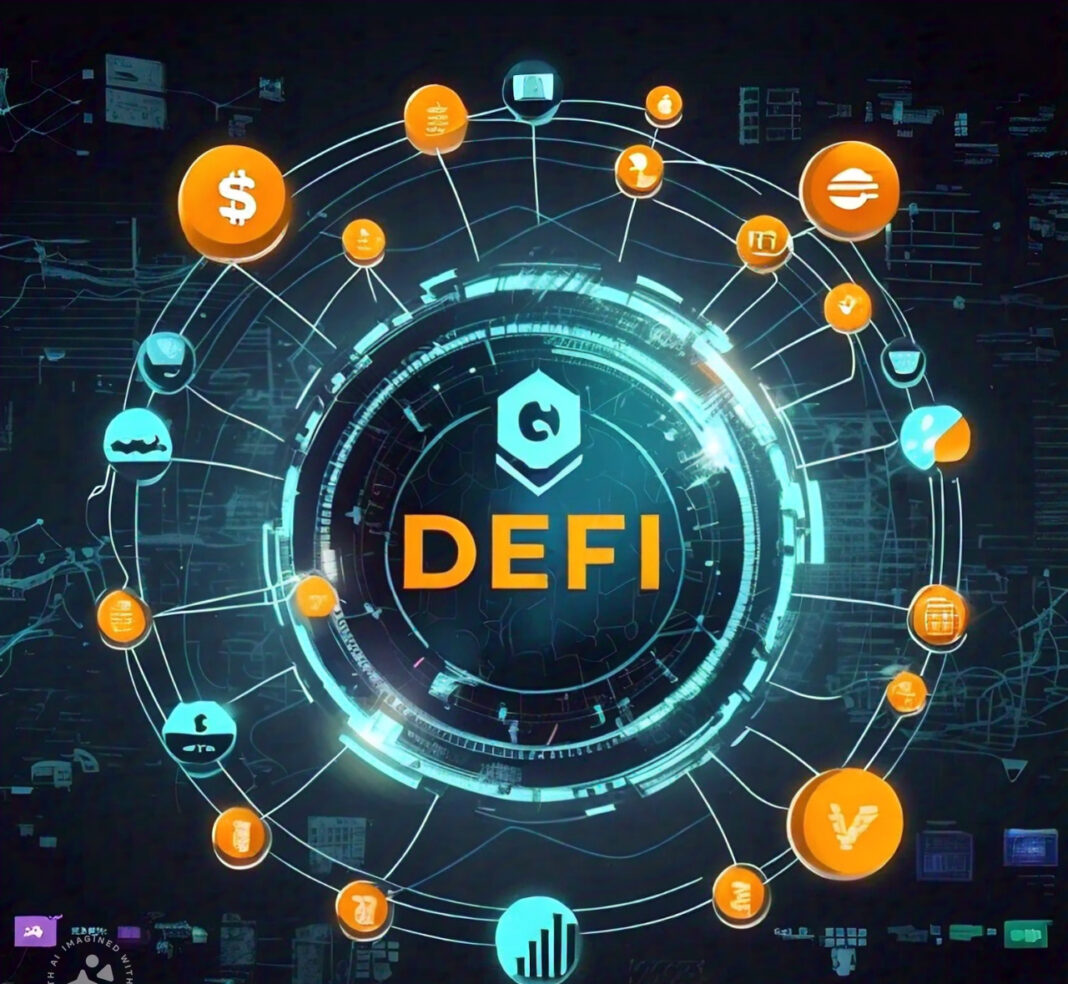
Decentralized finance (DeFi) has revolutionized the financial landscape, offering unparalleled opportunities for growth, innovation, and democratization. As the DeFi ecosystem continues to evolve, it’s essential for beginners and seasoned cryptocurrency investors to stay informed about the most promising projects. With the DeFi market capitalization surpassing $100 billion, navigating the vast array of projects can be daunting. This article provides a comprehensive guide to the most promising DeFi projects, empowering you to make informed investment decisions and stay ahead in the DeFi space.
In this article, we’ll delve into the top DeFi projects across various categories, including lending, decentralized exchanges (DEXs), stablecoins, and yield farming. We’ll also explore the investment potential, risks, and challenges associated with each project, providing expert advice on investment strategies and portfolio optimization. Whether you’re a DeFi beginner or a seasoned cryptocurrency investor, this guide will help you navigate the DeFi landscape with confidence.
Understanding DeFi Concepts and Projects
Before diving into the most promising DeFi projects, it’s essential to understand the underlying concepts and categories. DeFi projects can be broadly classified into:
1. Lending Platforms
- Compound: A decentralized lending platform allowing users to borrow and lend cryptocurrencies such as Ethereum, Dai, and USDC.
- Aave: A lending platform offering flash loans, rate switching, and decentralized governance.
2. Decentralized Exchanges (DEXs)
- Uniswap: A popular DEX enabling users to trade Ethereum-based tokens in a trustless and permissionless manner.
- SushiSwap: A community-driven DEX offering liquidity mining, yield farming, and governance features.
3. Stablecoins
- MakerDAO: A decentralized stablecoin platform issuing Dai, a stablecoin pegged to the US dollar.
- TerraUSD: An algorithmic stablecoin maintaining a stable price through supply and demand mechanisms.
4. Yield Farming and Liquidity Mining
- Yearn.finance: A yield optimization platform automating yield farming and liquidity mining across various DeFi projects.
- Curve Finance: A decentralized exchange liquidity pool offering yield farming and liquidity mining opportunities.
Real-life examples:
- Alice uses Compound to borrow Dai, which she uses to purchase Ethereum on Uniswap.
- Bob invests in Aave’s lending pool, earning interest on his deposited USDC.
- Charlie uses MakerDAO to mint Dai, which he uses to purchase a stablecoin-based index fund.
These examples illustrate how DeFi projects interact and provide opportunities for users to engage with the ecosystem.
Top DeFi Projects for Beginners
Here are some top DeFi projects suitable for beginners, along with their features and benefits:
1. Compound
- Feature: Decentralized lending and borrowing
- Benefit: Earn interest on deposited assets or borrow assets with interest
- Example: Alice deposits 10 ETH into Compound, earning 5% APY interest.
2. Uniswap
- Feature: Decentralized exchange (DEX) for trading Ethereum-based tokens
- Benefit: Trade tokens trustlessly and permissionlessly
- Example: Bob trades 1 ETH for 100 DAI on Uniswap.
3. MakerDAO
- Feature: Decentralized stablecoin platform (Dai)
- Benefit: Use a stablecoin pegged to the US dollar for trading or savings
- Example: Charlie mints 100 Dai, which he uses to purchase a stablecoin-based index fund.
4. Aave
- Feature: Decentralized lending and borrowing with flash loans
- Benefit: Borrow assets with interest or earn interest on deposited assets
- Example: David borrows 100 USDC from Aave, using it to purchase Ethereum on Uniswap.
5. Yearn.finance
- Feature: Yield optimization platform for automated yield farming and liquidity mining
- Benefit: Earn optimized yields across various DeFi projects
- Example: Emily deposits 100 USDC into Yearn.finance, earning optimized yields across multiple DeFi projects.
These projects offer user-friendly interfaces and straightforward use cases, making them ideal for beginners.
Promising DeFi Projects for Investment

Here are some promising DeFi projects with high growth potential, along with their features and benefits:
1. Yearn.finance (YFI)
- Feature: Yield optimization platform with automated yield farming and liquidity mining
- Benefit: Earn optimized yields across various DeFi projects
- Example: Emily invests 100 ETH in YFI, earning 20% APY through optimized yield farming.
2. Curve Finance (CRV)
- Feature: Decentralized exchange liquidity pool with yield farming and liquidity mining
- Benefit: Earn trading fees and optimized yields through liquidity provision
- Example: David invests 100 USDC in CRV, earning 15% APY through liquidity provision.
3. Synthetix (SNX)
- Feature: Decentralized synthetic asset platform with yield farming and liquidity mining
- Benefit: Create and trade synthetic assets with optimized yields
- Example: Alice invests 100 ETH in SNX, earning 25% APY through synthetic asset creation.
4. SushiSwap (SUSHI)
- Feature: Community-driven decentralized exchange with liquidity mining and yield farming
- Benefit: Earn trading fees and optimized yields through liquidity provision
- Example: Bob invests 100 ETH in SUSHI, earning 18% APY through liquidity provision.
5. Ren Protocol (REN)
- Feature: Decentralized interoperability protocol for cross-chain asset transfer
- Benefit: Enable seamless asset transfer between chains with optimized yields
- Example: Charlie invests 100 BTC in REN, earning 12% APY through cross-chain asset transfer.
These projects offer innovative solutions and high growth potential, making them attractive investment opportunities.
DeFi Project Comparison and Trend Identification
Here’s a comparison of top DeFi projects by category, along with their features and benefits:
Lending Platforms
| Project | Interest Rates | Borrowing Limits |
|---|---|---|
| Compound | 5%-10% APY | 50%-75% LTV |
| Aave | 6%-12% APY | 50%-80% LTV |
| dYdX | 8%-15% APY | 50%-90% LTV |
Decentralized Exchanges (DEXs)
| Project | Trading Fees | Liquidity Mining |
|---|---|---|
| Uniswap | 0.3% | Yes |
| SushiSwap | 0.25% | Yes |
| Curve Finance | 0.04% | Yes |
Stablecoins
| Project | Peg | Interest Rates |
|---|---|---|
| MakerDAO (Dai) | USD | 4%-8% APY |
| TerraUSD (UST) | USD | 5%-10% APY |
| USDC | USD | 2%-5% APY |
Real-life examples:
- Alice compares lending rates between Compound and Aave, choosing Aave for its higher interest rates.
- Bob evaluates trading fees on Uniswap and SushiSwap, selecting SushiSwap for its lower fees.
- Charlie researches stablecoin options, selecting MakerDAO’s Dai for its decentralized governance.
Trend identification:
- Increased adoption of decentralized lending platforms
- Growing popularity of community-driven DEXs
- Rising demand for stablecoins with decentralized governance
Risk Assessment and Management
DeFi projects come with unique risks, including:
1. Smart Contract Risks
- Example: A vulnerability in Compound’s smart contract allows an attacker to drain funds.
- Mitigation: Regular audits, testing, and bug bounties.
2. Liquidity Risks
- Example: A sudden withdrawal of funds from Uniswap causes liquidity crisis.
- Mitigation: Diversified liquidity sources, liquidity mining incentives.
3. Market Risks
- Example: A market downturn affects the value of assets borrowed on Aave.
- Mitigation: Diversified portfolios, risk assessment tools.
4. Regulatory Risks
- Example: A change in regulations affects the operation of MakerDAO.
- Mitigation: Compliance with regulations, lobbying for favorable policies.
Real-life examples:
- David uses risk assessment tools to evaluate the smart contract risk of investing in Yearn.finance.
- Emily diversifies her portfolio across multiple DeFi projects to mitigate market risks.
- Bob participates in bug bounty programs to help identify smart contract vulnerabilities in SushiSwap.
Best practices for risk management:
- Regularly monitor and assess risks
- Diversify investments and liquidity sources
- Stay informed about regulatory changes
- Use risk assessment tools and frameworks
Regulatory Insights and Compliance

DeFi projects must navigate complex regulatory environments, including:
1. Anti-Money Laundering (AML) and Know-Your-Customer (KYC)
- Example: MakerDAO implements AML/KYC measures to comply with regulations.
- Compliance: Implement AML/KYC procedures, partner with regulated entities.
2. Securities and Exchange Commission (SEC) Regulations
- Example: Compound registers with the SEC as a securities exchange.
- Compliance: Register with regulatory bodies, ensure securities compliance.
3. Data Protection and Privacy
- Example: Uniswap implements data protection measures to comply with GDPR.
- Compliance: Implement data protection measures, ensure user privacy.
4. Tax Compliance
- Example: Aave provides tax reporting tools for users.
- Compliance: Provide tax reporting tools, ensure tax compliance.
Real-life examples:
- Alice uses a DeFi project that implements AML/KYC measures, ensuring regulatory compliance.
- Bob invests in a DeFi project registered with the SEC, ensuring securities compliance.
- Charlie uses a DeFi project with robust data protection measures, ensuring user privacy.
Best practices for regulatory compliance:
- Stay informed about regulatory changes
- Implement AML/KYC, securities, and data protection measures
- Partner with regulated entities
- Provide tax reporting tools
Getting Started with DeFi
Ready to start your DeFi journey? Here’s a step-by-step guide:
1. Set up a Digital Wallet
- Example: Alice sets up MetaMask to interact with DeFi projects.
- Options: MetaMask, Trust Wallet, Ledger Live.
2. Fund Your Wallet
- Example: Bob buys Ethereum to fund his MetaMask wallet.
- Options: Buy cryptocurrencies on exchanges, transfer from other wallets.
3. Explore DeFi Projects
- Example: Charlie researches and selects DeFi projects to invest in.
- Resources: DeFi Pulse, CoinGecko, project websites.
4. Start Investing
- Example: David invests in Compound, earning interest on his Ethereum.
- Options: Lending, borrowing, trading, yield farming.
5. Monitor and Adjust
- Example: Emily regularly monitors her DeFi investments, rebalancing her portfolio.
- Tools: Portfolio trackers, price alerts, DeFi analytics platforms.
Real-life examples:
- Alice uses MetaMask to invest in Uniswap, earning trading fees.
- Bob funds his wallet with Ethereum, investing in Aave’s lending pool.
- Charlie researches and invests in SushiSwap, participating in liquidity mining.
Best practices for getting started:
- Educate yourself on DeFi concepts and risks
- Set clear investment goals and strategies
- Diversify your portfolio
- Regularly monitor and adjust your investments
DeFi Investment Strategies
Here are some DeFi investment strategies, along with real-life examples:
1. Yield Farming
- Example: Alice invests in Yearn.finance, earning optimized yields across DeFi projects.
- Benefits: High returns, diversification, automated yield optimization.
2. Liquidity Mining
- Example: Bob invests in Uniswap, earning trading fees and liquidity mining rewards.
- Benefits: Passive income, liquidity provision, trading fees.
3. Lending and Borrowing
- Example: Charlie lends Ethereum on Aave, earning interest, and borrows Dai to invest in SushiSwap.
- Benefits: Earn interest, borrow assets, diversify investments.
4. Diversification
- Example: David invests in a mix of DeFi projects, including lending, borrowing, and yield farming.
- Benefits: Risk management, diversified returns, exposure to various DeFi sectors.
5. Long-Term Holding
- Example: Emily invests in MakerDAO’s Dai, holding it long-term for stability and interest.
- Benefits: Stable returns, low risk, long-term growth.
Real-life examples:
- Alice earns 20% APY through yield farming on Yearn.finance.
- Bob earns 15% APY through liquidity mining on Uniswap.
- Charlie earns 10% APY through lending on Aave.
Best practices for DeFi investment strategies:
- Assess personal risk tolerance and investment goals
- Diversify investments across DeFi sectors
- Regularly monitor and adjust investment strategies
- Stay informed about market trends and DeFi developments
Conclusion
Decentralized finance (DeFi) has revolutionized the financial landscape, offering unparalleled opportunities for growth, innovation, and democratization. By understanding DeFi concepts, projects, and investment strategies, individuals can navigate this complex ecosystem with confidence.
In this guide, we’ve explored:
- DeFi fundamentals and projects
- Investment strategies and opportunities
- Risk assessment and management
- Regulatory insights and compliance
- Getting started with DeFi
- DeFi investment strategies
Remember to:
- Educate yourself on DeFi concepts and risks
- Set clear investment goals and strategies
- Diversify your portfolio
- Regularly monitor and adjust your investments
- Stay informed about market trends and DeFi developments
Embrace the DeFi revolution and unlock new financial possibilities!






